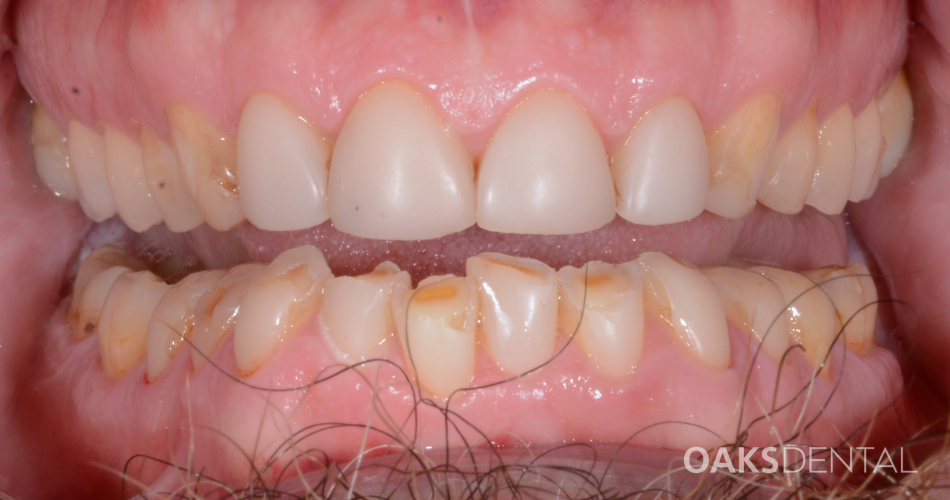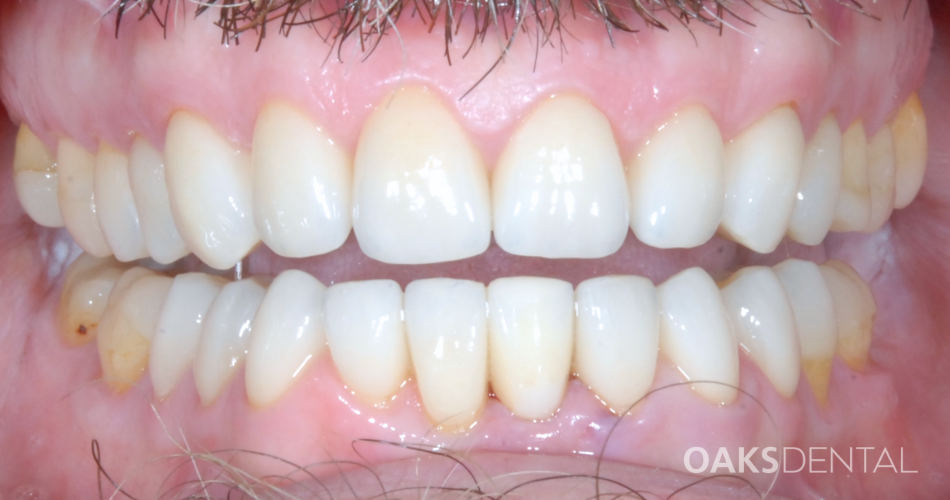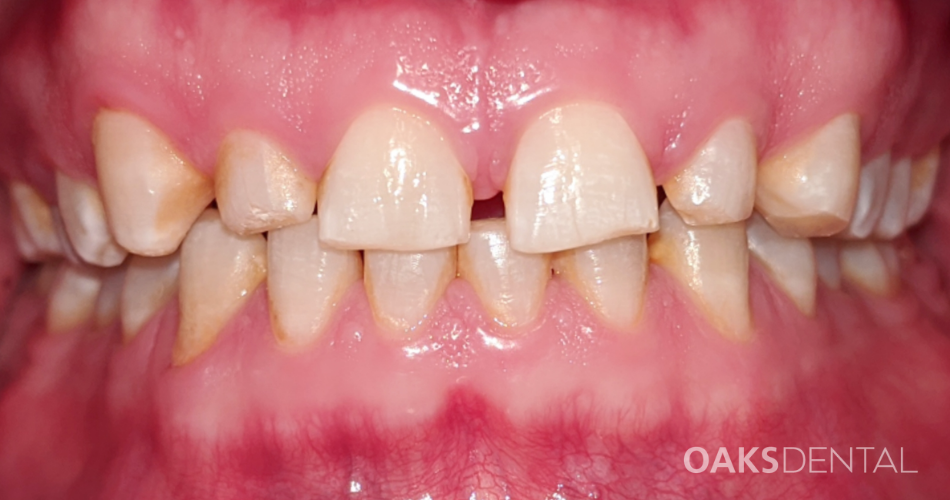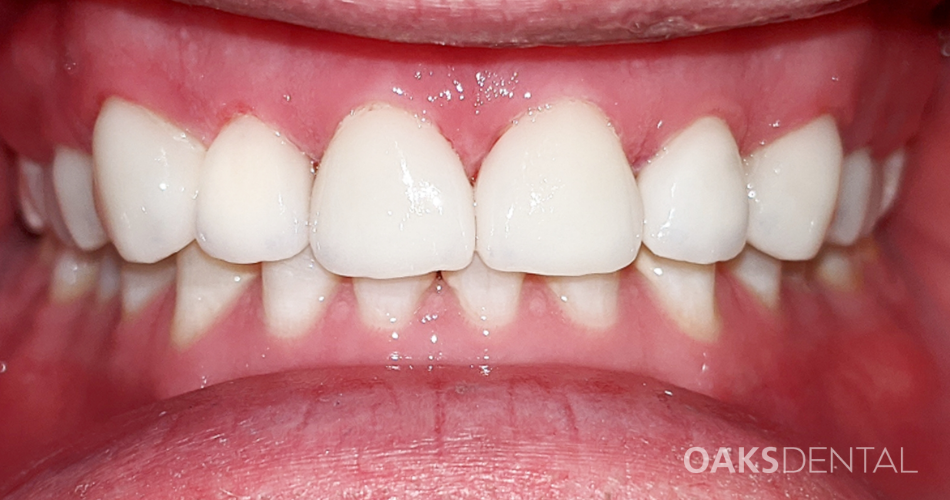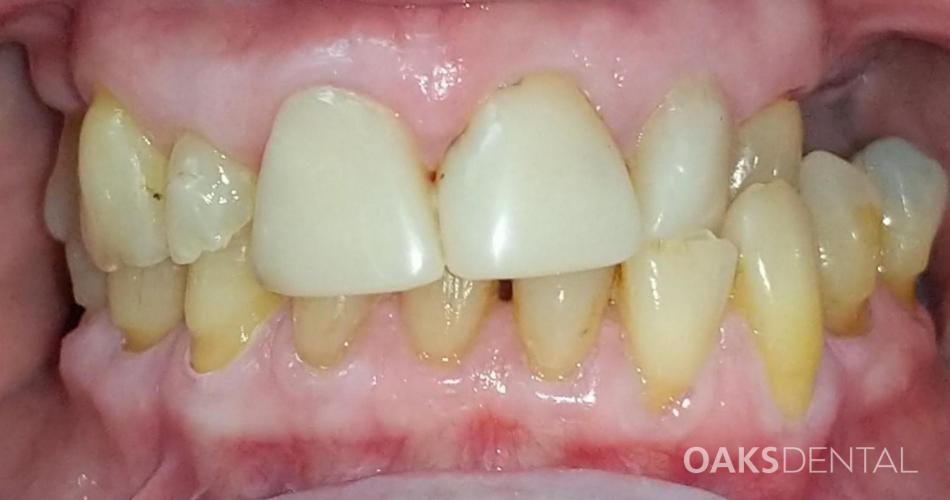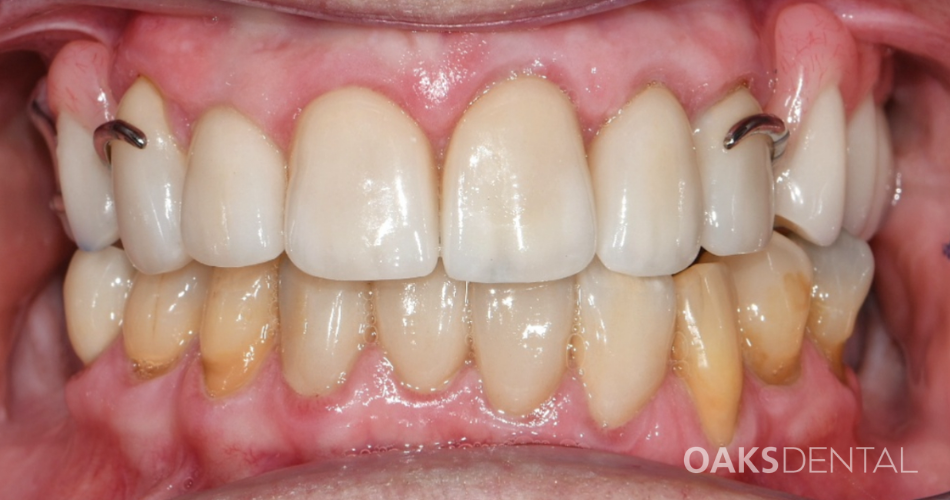NEUTRAL BAY | RESTORATIVE DENTISTRY
Dental Crowns & Onlays
Strong, beautiful protection for compromised teeth
When a tooth is severely worn, cracked or weakened by a large filling or root canal, a crown may be needed to restore its strength and appearance. Our ceramic crowns and onlays are custom-made for durability and a perfect match to your existing smile.
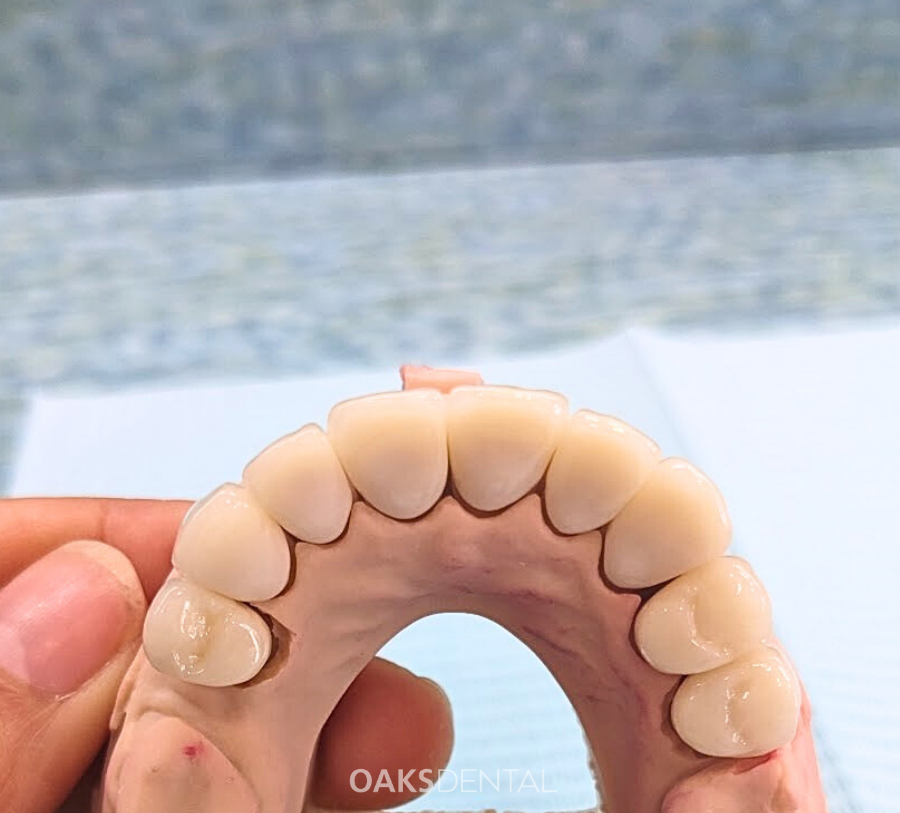
What is a Dental Crown or Onlay?
Dental crowns and onlays are custom-made restorations that help strengthen and protect teeth that are heavily filled, cracked or compromised after a root canal. They are made of safe materials well-tolerated by the body, reducing the risk of irritation or allergies.
What is the difference between a Crown, Onlay and Inlay?
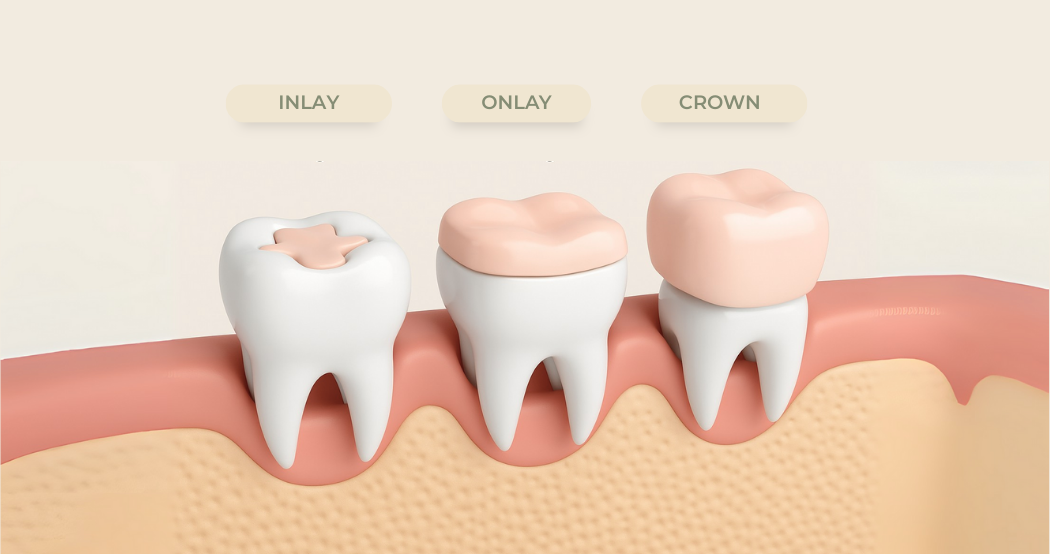
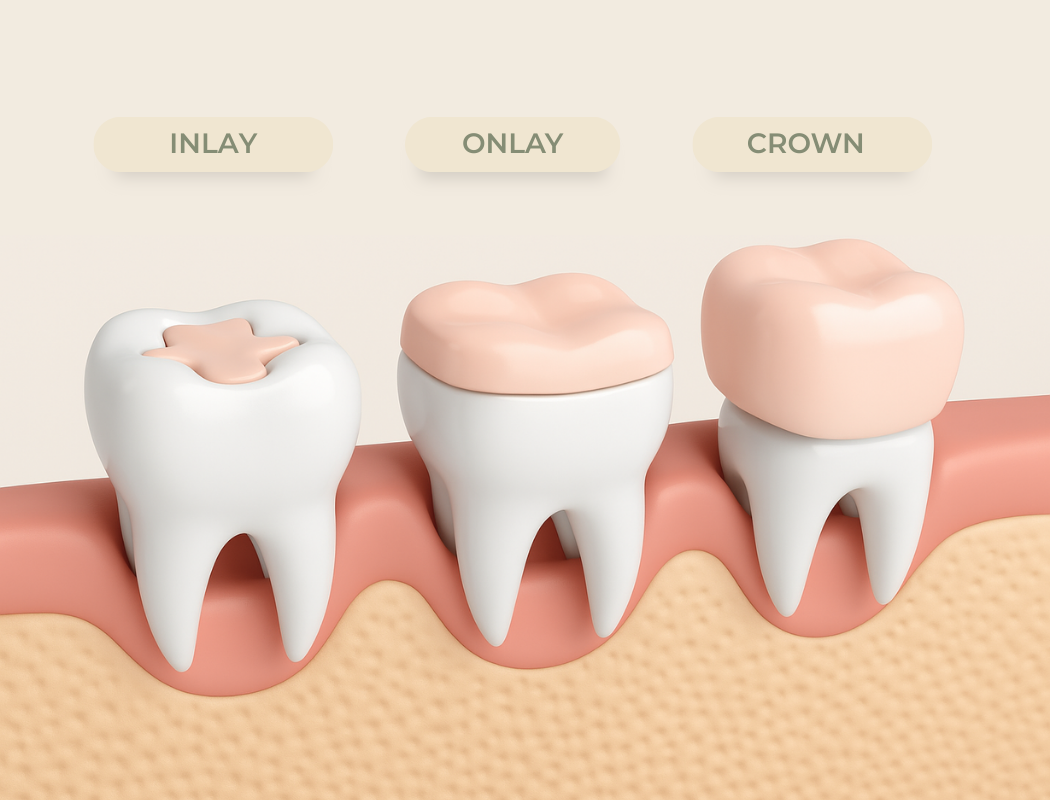
| Treatment | Covers | Best for | Key Benefit |
| Dental Crown | Entire tooth | Heavily weakened, fractured, or root canal – treated teeth | Provides full protection and strength |
| Onlay | Part of the chewing surface | Moderate damage or decay | Preserves more natural tooth structure |
| Inlay | Inside the cusps of the tooth | Small cavities or mild decay between cusps | Strengthens tooth while conserving enamel |
Dental Crown
-
Covers: Entire tooth
-
Best for: Heavily weakened, fractured, or root canal–treated teeth
-
Key Benefit: Provides full protection and strength
Onlay
-
Covers: Part of the chewing surface
-
Best for: Moderate damage or decay
-
Key Benefit: Preserves more natural tooth structure
Inlay
-
Covers: Inside the cusps of the tooth
-
Best for: Small cavities or mild decay between cusps
-
Key Benefit: Strengthens tooth while conserving enamel
INLAY (GOLD)
Treating tooth decay
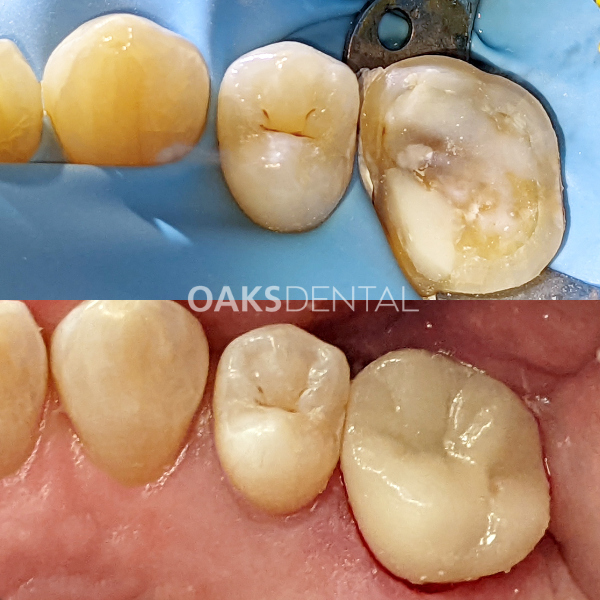
ONLAY (PORCELAIN)
Treating a cracked tooth
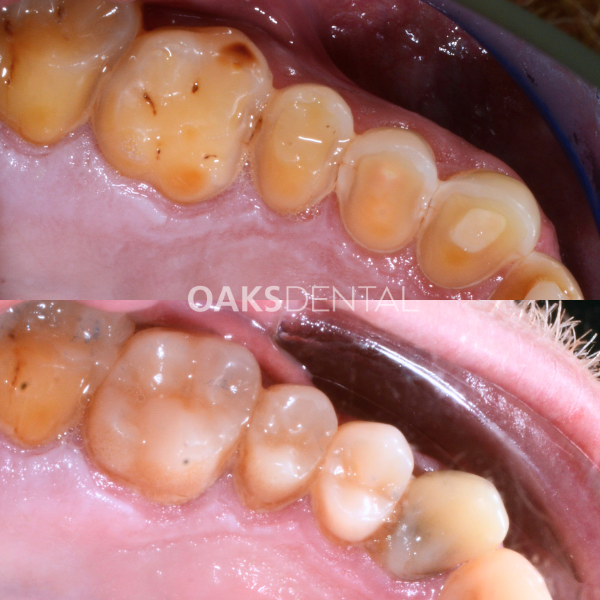
DENTAL CROWN (COMPOSITE)
Tooth wear stabilisation from grinding, reflux & acidic diet
Before & After
Porcelain crowns & onlays
Tooth wear from grinding & acidic diet
Porcelain crowns
Closing spaces
Porcelain crowns & denture
Smile rehabilitation
What happens during a crown or onlay procedure?
1. Initial Consultation
Your dentist will examine your tooth and may take X-rays to determine if a crown or onlay is the best solution for your situation. In some cases, a root canal may be required if the tooth is severely damaged or the nerve is compromised.
2. Local Anaesthetic
Strong numbing gel, followed by local anesthesia to ensure a pain-free procedure.
3. Tooth Preparation
The affected tooth is reshaped to accommodate the crown or onlay.
4. 3D Scan
A digital 3D scan of your tooth is taken to ensure a perfect fit for your custom crown or onlay. This scan is comfortable and mess-free, compared to traditional impressions.
5. Temporary Crown
While your permanent crown or onlay is being made, we will place a temporary cover to protect the tooth.
6. Final Fitting
Once your custom ceramic crown or onlay is ready, we will precisely place it on your tooth and ensure a comfortable, secure fit. Any final adjustments are made to ensure it aligns perfectly with your bite.
Why choose Oaks Dental for Dental Crowns & Onlays?
Experienced dentists with years of skill in creating durable, natural-looking crowns and onlays tailored just for you.
Conservative treatment approach that focuses on preserving as much of your natural tooth as possible while providing strong, lasting protection.
Committed to perfection — we work with our trusted dental ceramicists to ensure your dental crowns & onlays are a seamless fit and made from the highest-quality materials.
Gentle, patient-focused approach to keep you comfortable and relaxed throughout your treatment from start to finish.

Can I get a gold crown?
Yes! At Oaks Dental, in addition to offering aesthetic ceramic crowns and onlays, we also offer premium and high-quality content gold crowns and onlays. Gold crowns and onlays are available and are recommended for patients who grind or clench their teeth, or for molars that endure high bite pressure or are severely broken down. Gold is extremely durable and biocompatible, though less aesthetic than ceramic.
Frequently Asked Questions
When do I need a crown or onlay?
A crown or onlay is recommended if your tooth has a large or broken filling, is cracked or weakened, has had root canal therapy, or is worn down from grinding or acid erosion. Your dentist will assess your tooth and advise the best option.
What’s the difference between a filling and a crown?
Fillings (usually composite resin) are best for small to medium repairs. Crowns and onlays, made from strong porcelain or gold, are ideal for larger repairs. They provide greater durability and are especially suited for back teeth under heavy chewing pressure.
Are crowns and onlays painful?
No. We use numbing gel and local anaesthetic to ensure the procedure is comfortable and pain-free. You may feel mild tenderness or sensitivity afterwards, but this usually settles quickly.
How long does treatment take?
Crowns and onlays usually require two visits. The first (about 90 minutes) involves preparing the tooth and taking a digital scan. The second (about 45 minutes) is when your custom-made crown or onlay is permanently fitted.
What can I eat after a crown or onlay?
Once your final crown or onlay is placed, you can eat normally. Avoid very hard or sticky foods for the first 24 hours. If you have a temporary crown, stick to softer foods and avoid chewing on that side until your permanent crown is fitted.
How long do crowns and onlays last?
With proper care, ceramic crowns and onlays can last 10–15 years or more. Avoid habits like teeth grinding, nail biting, or using your teeth to open objects to extend their lifespan. Regular dental check-ups are essential.
Do crowns and onlays require special care?
Care for them like your natural teeth. Brush twice daily, floss daily, and keep up with your regular dental check-ups. Your dentist may recommend a night-guard to protect your crown/onlay and natural teeth from grinding or clenching habits.
How much do crowns and onlays cost?
Costs vary depending on the material used and the condition of your tooth. Crowns and onlays are more of an investment than fillings because they are stronger and longer-lasting. You’ll receive a personalised quote at your consultation.
Are crowns and onlays covered by private health insurance?
Yes. Most private health funds cover crowns and onlays under Major Dental. We can check your rebate on the spot and provide your out-of-pocket costs.


